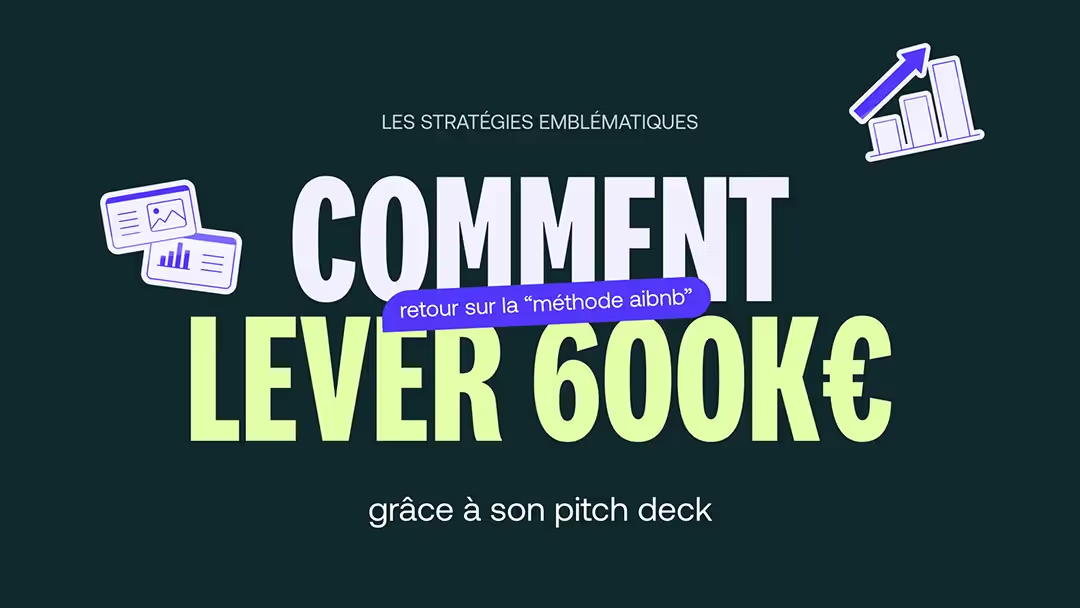Storytelling: 5 keys to help you convince
Storytelling is the art of captivating an audience: discover how to speak up and convince your audience!

Giving a presentation in front of any audience can be an arduous exercise. Captivating listeners is a quality in itself and can make your presentation a success.
Take most of the companies that dominate the market right now: they all knew how to tell a story story. Expressing emotions, conveying empathy and creating attachment is undoubtedly one of the most effective ways to make yourself known and appreciated by the general public. Storytelling is a powerful tool and exploiting it means gaining a huge competitive advantage.
Apple has proven that you can start from scratch, start in a garage and become the mastodon of new technologies that we all know today.
Coca-Cola posed as a paramedical drink in its early days and expanded its influence to entice people to drink its products.
Kusmi Tea, a French tea brand, focused all its communications on the Russian origins of a brand it bought in 2003, Kousmichoff, which allowed it to establish itself as an important player in the luxury tea market.
So, whether it's Succeed in presenting for a Webinar or to present your PowerPoint to investors, storytelling deserves to be given a place in the way it structures and presents speeches.
What is storytelling?
Far from being an enigmatic science or an impenetrable ancestral path, the Storytelling is “the art of telling stories” says Yaël Gabison in his book Boost your presentations with Storytelling (Eyrolles, 2019). Indeed, she defines it as a way of presenting “differently”, by telling stories.
Our “other way” is actually a very specific process. Indeed, Larousse defines it as “a technique that consists in promoting an idea through the story that one tells it, in order to arouse attention, seduce and convince through emotion rather than through argumentation”.
So, we can already remember the fact that storytelling is a way of Convince with a story.
Storytelling is a powerful way to make the audience feel close to you. Thus, when preparing a speech, you should always keep in mind that your listeners do not know you or what you are bringing or are going to say, and that they must therefore feel understood and taken into consideration. Different ways are possible, but drawing on the general knowledge of your audience is often a good way to create a connection and break the initial ice. Talk about what everyone knows, make comparisons, metaphors, in short, try to establish a connection that your audience will be forced to grasp.
For example, we all have some parallels in mind due to our Western upbringing, such as the fact that black symbolizes mourning, white symbolizes purity, or that the snake represents evil and duplicity.
Good storytelling will rely on these references to find points of support and start the story with irrefutable elements that are known to all.

What is storytelling for?
If you think that the artistic world of storytelling is out of your reach, think again. Indeed, we can all tell stories, without being a writer or without starting our story with Once upon a time. The best way to unveil the truth is to understand what storytelling will create for your audience.
Storytelling hides a completely scientific explanation that is simply Capturing attention through emotion. Leaving an emotional imprint on the person who is attending your PowerPoint presentation makes them want to take advantage of the opportunity you are presenting to them.
The brain is in fact based on three levels that all work together to help us make decisions.
- The first level, the reptilian brain, requires a need for security.
- At the second level, there is the limbic brain, which corresponds to emotions in the sense of feeling and emotional memory. According to Yaël Gabison, these two brain areas must be reassured and cared for, in order to hope to reach the person to whom you present your idea.
- It is only the third level, the cortex, that allows fluid reasoning required for action or non-action.
It is therefore essential to trust your audience to convince them of the story that is being told. Of course, this is not a dolosive maneuver, but to build a story that will arouse emotion.
The objective of storytelling is therefore to capture the attention of the audience during an oral presentation or a written story. The story should inspire trust, for example by integrating personal data, and thrill the audience while providing added value. During speaking, it is then a question of combining an interesting story with natural gestures that will make your verbal and non-verbal language as friendly as possible. Speaking out to present a storytelling means putting on a show, showing that your pitch is good and that your slides are worth it. Use all your speaking skills to get your message across and draw everyone's attention to the rest of your slideshow.
So we have prepared 5 keys for you to get closer to the storyteller you could become and To inspire confidence in future believers.
The 5 keys to successful storytelling
To make your presentation a success, we offer you five infallible ways to approach your public speaking calmly and effectively.
1 - Be honest, don't add anything
Like the famous McDonald's slogan, come as you are,** don't be afraid to be yourself during your presentation. Yes, your story matters. Yes, it is important and valuable. As particular or trivial as it may be, it will speak to the people who will listen to you and that is the most important thing. They will see the human, behind the project manager.
Don't think about how you should be, but rather what part of your story can reach your audience. Because in fact, the goal -with storytelling- is not to adopt a strategy of address-all-the-points-without-of-none, but to convince. So, to make your audience remember you, don't add superfluous elements to your story or overly complicated numbers. Instead, they can be presented in a written document or possibly inserted on the screen on your PowerPoint.
2 - Set up a clear and effective process
Making a presentation lively and captivating is the prerogative of the storyteller. And to do this, you must accompany your audience from point A to point B. To avoid getting lost along the way, it is better to stick to a breadcrumb trail - apparent or not.
Few have learned how to create a solid oral presentation at school, let alone how to create stories. However, you can make it very simple. If your objective is to respond to a call for tenders on the renovation of a site classified as a historic monument, it would be interesting to select key points in your history and that of your company that could be related to the project. In light of the relevance of its elements, ask yourself the question of how you came to respond to this call for tenders. All you have to do is trace your common thread.
Thus, you will first be able to talk about your fascination for castles as a child, and how this led you to create your business in the renovation of monuments. Then, highlight solid elements, such as your value proposition, to come up with why you are best placed to meet their needs. Define yourself as the best partner for their future needs, show that your services correlate and you will have their preference.
3 - Embody your inner storyteller
Storytelling is in telling. It is best to play the game and put yourself in the shoes of a storyteller during the presentation, and thus give you more chances of convincing.
On this point, there are no secrets, just training and practice. Public speaking is an exercise to master, so learn to put your voice down and to articulate well. Take time to rehearse out loud, even without an audience. Memorize the best way to say things. Anticipate questions and try to answer them. Even if it's not perfect, you can give a good presentation.
Finally in the meantime, and on the English adage Fake It Until You Make It, dare to embody your inner storyteller. Dare to learn, make mistakes, bounce back. If you stay natural, your audience won't even notice it 😉.

4 - Create identification
This identification process is critical because your audience needs to be able to identify with your story. Indeed, nothing is more important to you than creating emotion in your audience.
To do this, consider asking yourself the question of “Who is my audience? ” Are they men, women? How old are they? Do they have the same references as me? The same culture? All of these questions are important, as you could make a total mistake in one case and a smoker in the other. That's why you need to choose archetypes that are sure to speak to them.
For example, the children of 1990 did not grow up with the same Disneys as those born after 2010. The generation born before the 2000s lived before the explosion of the Internet and social networks, when post-2000 children grew up with technological tools and Facebook in the schoolyard. Adapting to your audience is the key to creating contact.
5 - Believe in it as a rock
Finally, it is essential that you believe in your story in order for your audience to believe it in return. Having stage fright or a tic of speech is one thing, but starting the presentation with the idea that no one is going to believe in your story or that it is not interesting will get you anywhere. Your story has every chance of transmitting emotions and generating commitment, if you dare to believe it.
Let's conclude!
Storytelling is a profession that is developing more and more, also under more common names than “storytelling”. Do you know about copywriting? It is the art of writing powerful and convincing messages to promote your subject, in other words, it is the business of storytelling. In French it could be translated as “design-writing”. Whether it's pure writing, translation or proofreading, storytelling is now essential in the business world. Indeed, to convince and sell, it is no longer enough to describe characteristics anymore; you have to make people dream!
Giving presentations in front of strangers is a challenge. You test who you are and what you do in order to engage and convince your audience. It requires courage, preparation and oratory skills. Now we know that, thanks to this article, you have the last two. When it comes to courage, it's up to you!
See you soon at the Kings of La Prez! 👑
Ce qu'il faut retenir
What you need to remember:
- Storytelling is “the art of telling stories”, or even a technique that consists in promoting an idea through the story that one tells it, to attract attention, seduce and convince through emotion rather than through argumentation.
- Don't overdo it, be yourself, romance, but don't invent.
- Play the game and put yourself in the shoes of a storyteller during the presentation. In this way, you will be sure to convince.



